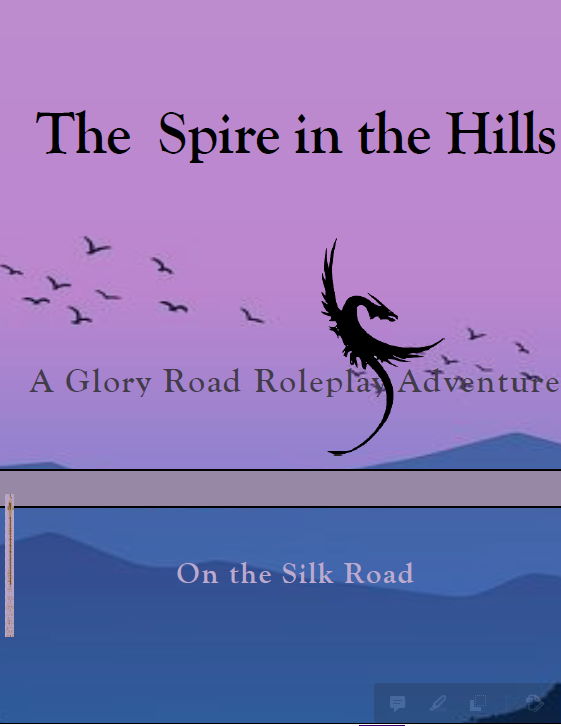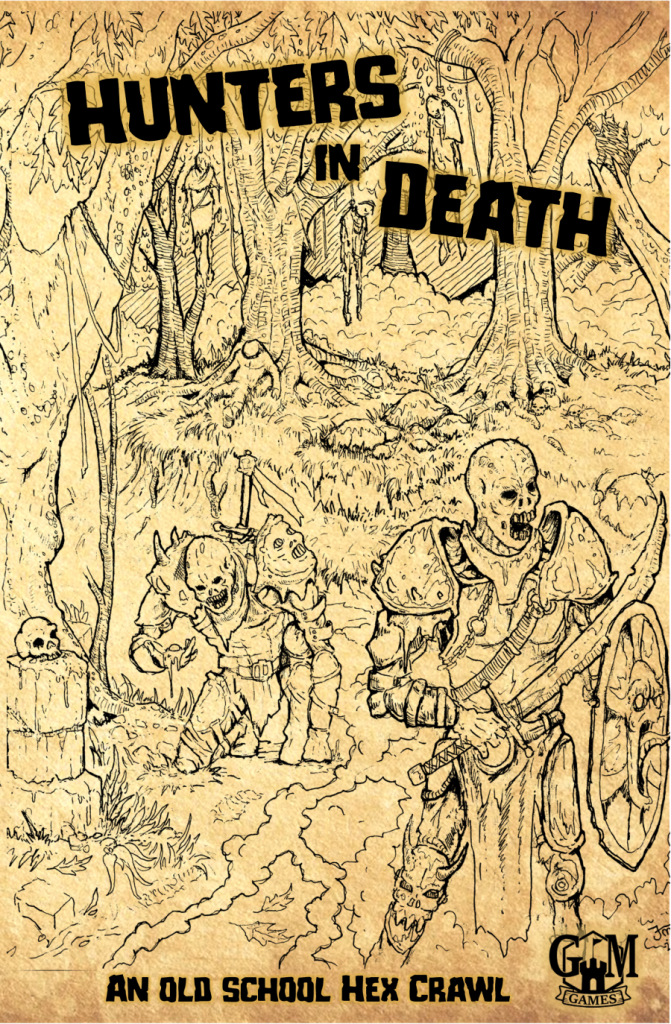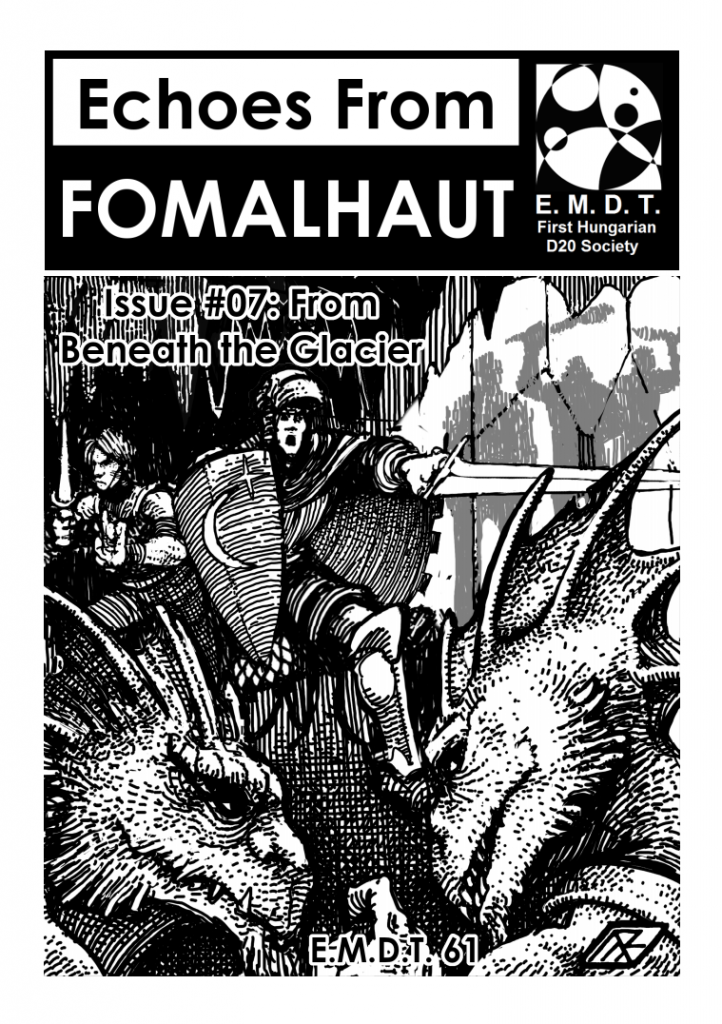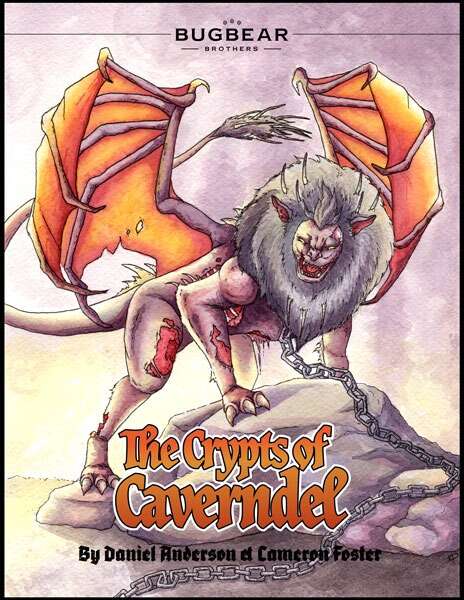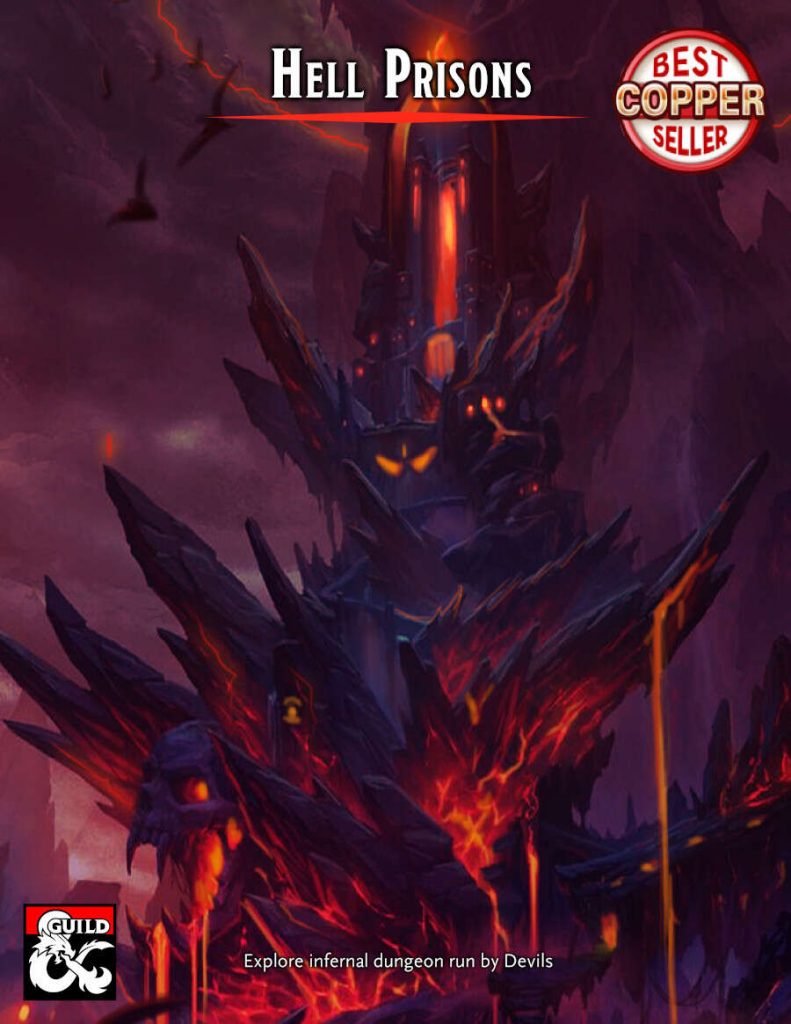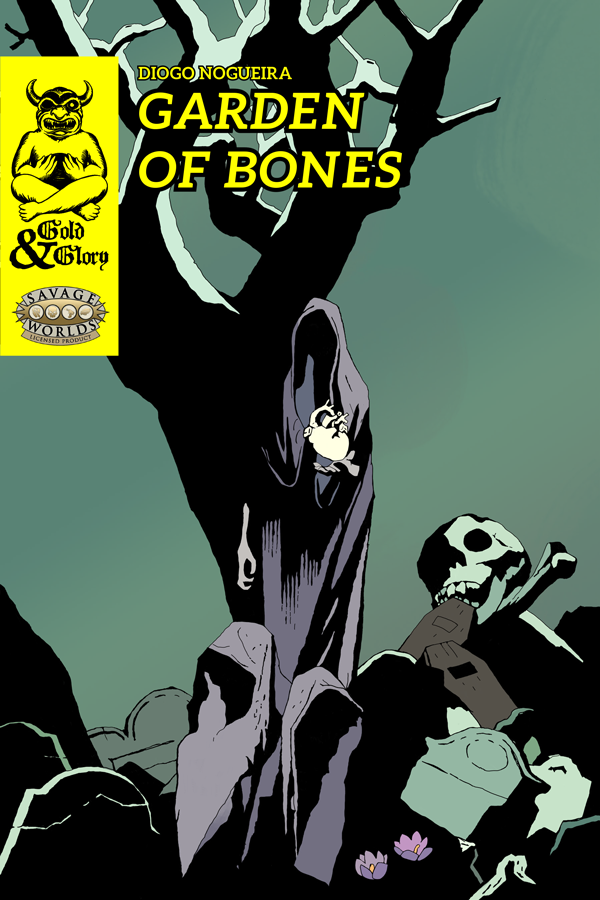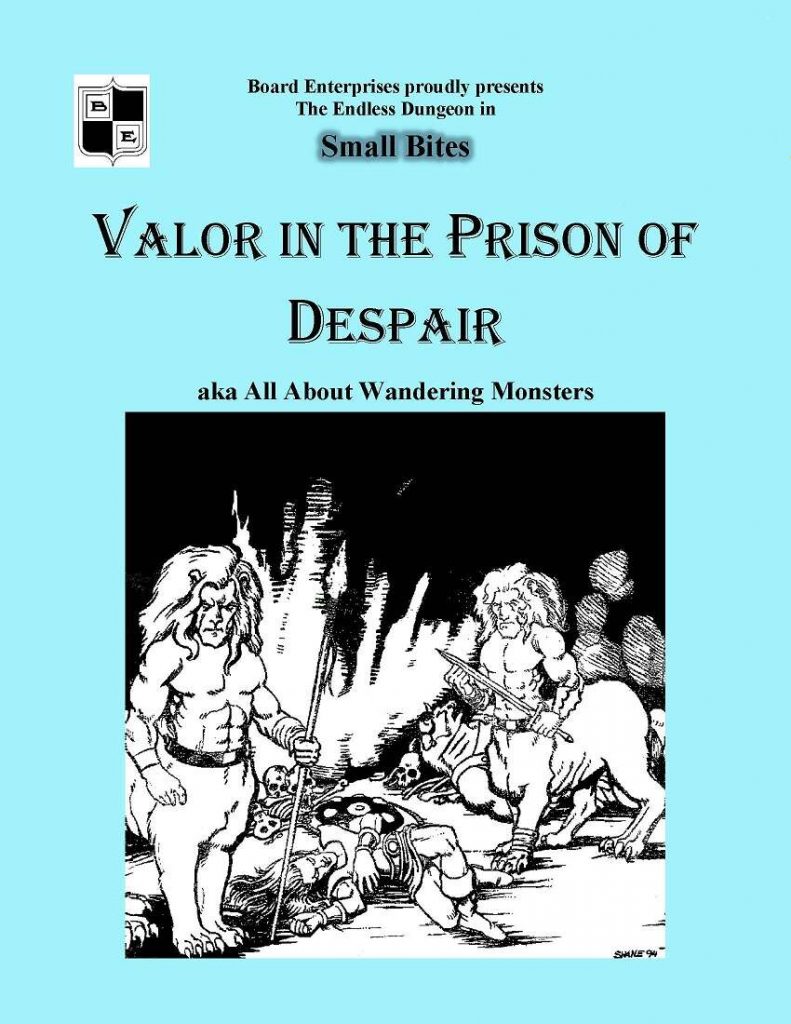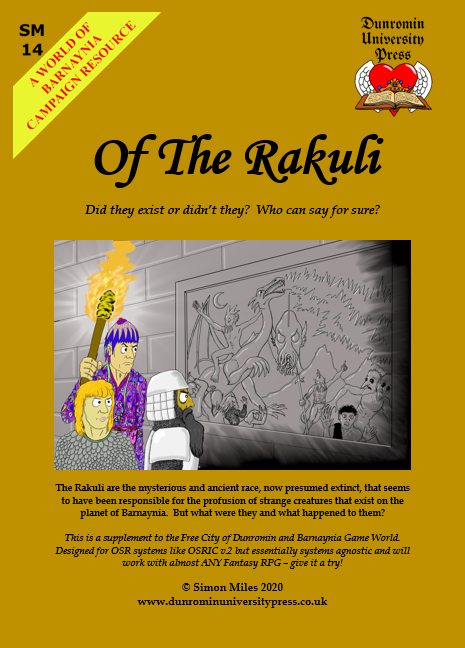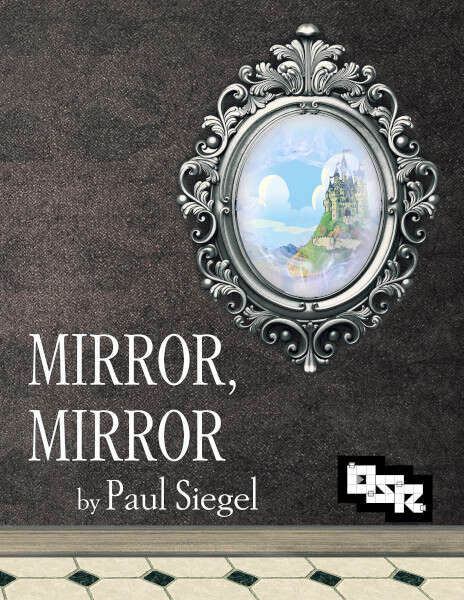
Paul Siegel Paul's Game Blog OSR/5e Levels 4-6
King Nuno has summoned the party to track down the missing knight Sir Lucan, who vanished just as his nemesis, Zeroun the Enchanter, escaped from prison. The fate of the kingdom, and the happiness of Princess Ardella, lie in the hands of our brave adventurers, but not all is quite as it seems.
This 31 page sandboxy adventure presents several locales along with a situation that is going on, leaving it up to the party to come to some resolution. It’s got an ineffective manner of presenting information and is missing clues needed to lead the party to different locations … making this, mostly, another adventure to skip, even though it IS written in a sandboxy way. Which is refreshing to see, especially given the adventures 5e origins.
This presents a twist on a classic fairytale. You know, where the dragon is good and the princess is evil. No, wait, everyone is evil. No, everyone is good. Well, almost everyone. The party walk around and talk to people, somehow figuring out they need to go to a new location to talk to other people. Interactivity is limited, essentially, to that: talking and stabbing. Although, I guess there is at least one opportunity to do some sneaking around … in front of guards with infravision. Anyway, not much interactivity here.
The dipshit princess falls in love with the good wizard Bob. Guard captain sees Bob talking to some hobgoblins and he and the good knight Dumbass put in him jail. King Dunderhead betroths the knight to his daughter. Daughter contacts wizard Bobs hobgoblin friends and they jailbreak him. In parallel, some dirt farmers think their drought is cause by a nearby wisewoman, and, coming after her with torches and pitchforks, she baba yagas her hut to run away. Knight encounters villagers, they point him at the witch, and she turns him in to a toad. Baddies are: the village mob, who blame the witch for the drought, led by their priest. The knight, or, rather, his LAWFUL sword, which can only detect evil intent and has a complex and is dominating the knight, and the hobgoblins, who slaughter a bunch of guards, a fact which is both implied and neatly glossed over. The parties best bet is to do nothing. In this case the wizard Bob gets carried off by a demon in three days time. Also, there’s no real loot in this adventure. At least, not any to tempt a party to adventure, given the GOLD=XP convention of old style play. This is, alas, a failing of many adventures converted to old school play. The designers don’t understand the need for Gold=XP.
But, let’s talk positives, lest I be confused with a Negative Nelly. It’s a sandbox. And a real one, to the extent allowed by the size of the adventure. The NPCs are presented, with their motivations and goals. The places are presented. The party is tasked with finding the knight and then the DM is left to it. It’s not got plot all over it, and it’s not written to be linear. This is GREAT. The party is allowed to roam and explore and do as they wish. This basic format is something that almost every 5e/Pathfinder (and many OSR) adventures could benefit from.
But the designer screws up nearly the entire execution after that.
NPC’s are a page long. This includes their personalities, appearances, backstory, and what they know about what’s going on. This is no way to format an NPC. Short, terse, easy to scan. Personality and appearance summarized in a couple of words each. What they know organized by topic, with whitespace or bullet points to call the eye. “Long Form Paragraph” is just about the worst way possible to present information IN TECHNICAL WRITING. Which is what this i. An adventure is a reference work, for use at the table, not something to pour over a thousand times until you know it better than the designer.
Simple mistakes abound. Fort Gall, the site of the prison jailbreak, is not noted anywhere on the map, or in the text. It has a map of its own, and keys, but where is it? Who knows. The village of Rylsk, where in the trail of the knight is picked up, is just randomly on the map, away from all of the action with the jailbreak. How do you find yourself there? Are there any clues? No. There are no clues. As far as I can tell, there is no way for the party to WANT to go to Rylsk, or even stumble upon it. Thus the village dirt farmers, witch, and knight subplot are, essentially, absent. Unless the DM just tells people to go there. For that matter, the entire matter of breadcrumbs is poorly handled. Other than the first: go to the ruined fort, sez the king. From there I guess someone tells you to go to the broken manor that has the wizard in it? It’s unclear.
Just what do the hobgoblins at the jailbreak/fort know? Just how do they react to the party, and an incursion? No advice given on either subject. Friendly? Not? Fire and torture? The World Shall Never Know.
I’m not looking for hand holding. But the basics of the breadcrumbs are missing. A sandbox adventure needs a few linkages. Follow things from A to B to C, with a few extra clues thrown in. This don’t do that. But it does like to talk, giving us backstory and history and irrelevant information about rooms and encounters. Information needs to be focused on the play at hand. Sure, an occasional aside is fine. Sure, more information is fine IF it doesn’t get in the way of running the adventure. But that’s not the case here.
I applaud the attempt at a sandbox adventure without a railroad, but the issues of formatting and organization are too much … which puts it in the same space as nearly every other adventure written. As a result this is just a mediocre effort tat needs significant improvement before being worthwhile to run. And, instead of devoting your time to that, why not just pick an adventure that is better for you to run in the first place?
Alas, once again, vision does not meet execution.
This is $8 at DriveThru. The preview is the first eleven pages. You get to see the NPC”s and all of the backstory, but none of the actual encounter areas. Getting rid of some of the background fluff and putting in a few pages worth of encounters, etc, would have been a much better preview. As is, you can’t really tell what you are buying. But, hey, you do get to see those page long NPC’s.
https://www.drivethrurpg.com/product/325204/Mirror-Mirror–OSR-Edition

